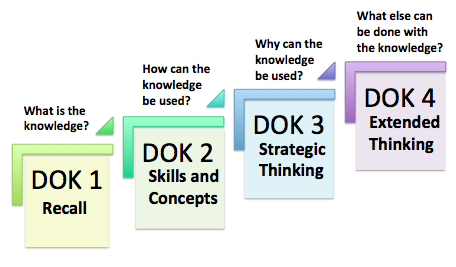
The purpose of the Florida Teacher Certification examinations (FTCE) is to ensure that all teacher candidates demonstrate the necessary content and pedagogical knowledge necessary to effectively instruct students in Florida.
While this is simply a list of instructional strategies, it contains many suggestions that can then be further researched.
The document provides descriptions of five types of graphic organizers and provides two examples of each type.
What are some types of classroom assessment and what student evidence can they generate?
The website gives various types of assessments that can be used in the classroom. Links to examples of the assessments are also provided.
Annenberg Professional Development Series
Teacher resources and professional development across the curriculum (videos)
Annenberg Learner Lesson Plans
Teacher resources and professional development across the curriculum
Beginning with the 2021-2022 academic year, the Florida Department of Education is transitioning to the new Benchmarks for Excellent Student Thinking (B.E.S.T.) in English Language Arts and Mathematics which replace the Language Arts Florida Standards (LAFS) and the Mathematics Florida Standards (MAFS). Fast Facts
CPALMS is an online toolbox of information, vetted resources, and interactive tools that helps educators effectively implement teaching standards. It is the State of Florida's official source for standards information and course descriptions.
Universal Design for Learning (UDL) is a framework to improve and optimize teaching and learning for all people based on scientific insights into how humans learn.
What is scaffolding?
Instructional scaffolds are temporary support structures put in place to assist students in accomplishing new tasks and concepts they could not typically achieve on their own. Once students are able to complete or master the task, the scaffolding is gradually removed or fades away—the responsibility of learning shifts from the instructor to the student.
This website provides various strategies for scaffolding knowledge with students.
This website provides a resource guide for scaffolding in education.
Instructional Scaffolding to Improve Learning
This website provides guidelines for implementing scaffolding.
Webb’s Depth of Knowledge Guide
Webb (1997) developed a process and criteria for systematically analyzing the alignment between standards and standardized assessments; and to review curricular alignment. This body of work offers the Depth of Knowledge (DOK) model employed to analyze the cognitive expectation demanded by standards, curricular activities and assessment tasks (Webb, 1997)

Marzano's Nine Instructional Strategies for Effective Teaching and Learning
Researchers at Mid-continent Research for Education and Learning (McREL) have identified nine instructional strategies that are most likely to improve student achievement across all content areas and across all grade levels.

Revised Bloom’s Taxonomy (RBT) employs the use of 25 verbs that create collegial understanding of student behavior and learning outcome.
Instructional Strategies for Math
These instructional strategies for math include active participation, assessment, classroom management, cooperative learning and differentiation.
The primary focus of the Bureau of Student Achievement through Language Acquisition (SALA) is to assist schools and districts with Florida's English Language Learners (ELLs), totaling over 265,000. Florida's diversity of ELLs surpasses most states in the country. Florida is ranked 3rd in ELL population, and although Spanish is the major native language of these students, the ELLs speak more than 300 different languages.
SALA Online Learning Series is a new professional development program that provides just-in-time training and support to teachers of English Language Learners (ELLs) when implementing evidence based academic programs to assist ELL academic achievement and English language acquisition.
There are a number of ways to support the language and literacy development of English language learners (ELLs) that also allow students to participate more fully in classroom activities and lessons. This section provides specific ideas and strategies, such as tips for planning lessons and the use of language objectives, as well as broader approaches such as using informal assessment and differentiation for varying language levels.
Neuroscience and Special Education
This document provides a brief overview of how neuroscience is being linked with the practice of special education. Definitions, terminology, and three profiles of programs which incorporate neuroscience in their special education curriculum are provided in the document.
Functional Behavior Assessments
Identifying the Reasons for Problem Behavior and Developing a Behavior Plan